What is Agentic AI? A Beginner’s Guide
What is Agentic AI? A Beginner’s Guide
Agentic AI represents a revolutionary shift in Artificial Intelligence. Agentic AI systems are different from traditional AI tools, showcasing a new paradigm in AI. They don't just respond to commands, also act on their own. They set goals and make decisions. They also adapt to feedback from their environment, just like proactive digital assistants.
This technology uses machine learning data analysis algorithms and models to analyze data. It finds patterns and performs complex tasks without needing constant human help. It also leads to advanced AI uses that change industries like healthcare and finance.
Introduction
AI agent as an independent "agent" that is gaining traction in computer science and business. Agentic AI and AI agents are common terms in Data Science with AIand Machine Learning. This shift comes as Artificial Intelligence evolves beyond basic programming. These systems represent a leap from reactive tools to proactive problem solvers.
They leverage neural networks, decision trees and predictive analytics to navigate real-world problems. Understanding Agentic AI basics helps tech lovers see how self-driving cars, smart chatbots, and finance bots work, enhancing their skills in technology. This guide makes things simplify Agentic AI for learners. It focuses on useful knowledge to learn AI for beginners and those who want to learn to code AI on their AI learning journey.
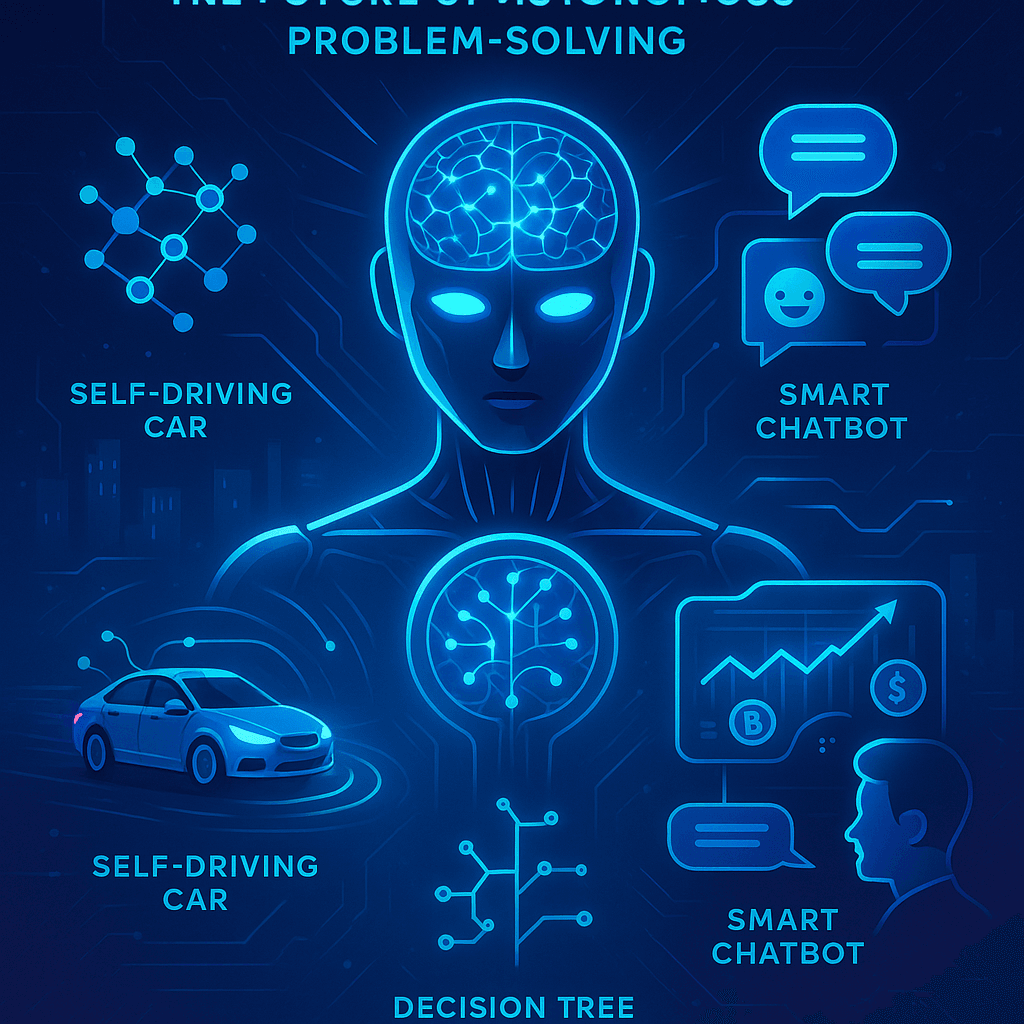
Understanding Agentic AI
Agentic AI systems function like digital entities with purpose and initiative. Standard algorithms stick to the rules. In contrast, these agents use machine learning to create their own goals. Their self-sufficiency derives from relentless learning through Deep Learning, Reinforcement learning and non-guided learning. It manages warehouse robotics, analyzes path efficiency and inventory patterns without external assistance.
It adjusts operations based on environmental feedback without human input. This capability changes how businesses manage complex tasks. For example, it helps with supply chain optimization and real-time customer experience management, utilizing machine learning data analysis and data mining techniques. The technology relies on big data.
It uses data science with AI and data manipulation techniques to pull insights from large datasets. Its decision-making logic uses genetic algorithms and predictive analytics. This lets systems like self-driving cars handle unpredictable road conditions. Understanding this helps learners to learn to code AI and better grasp how an AI agent operates in real-world applications.
Core Components of an AI Agent
Every effective AI agent relies on four interconnected modules that mimic human cognition.
Perception module (senses input from the environment)
Reasoning engine (makes logical decisions)
Learning system (incorporates feedback over time)
Actuator/output mechanism (takes action or sends a response)
These elements make up the architecture of any intelligent agent system.
The Perception module collects raw input, such as visual data or user queries. It works like computer vision systems that scan their surroundings.
The Reasoning engine processes this information using neural networks or decision trees. It identifies patterns and potential code errors, like an AI engineer troubleshooting software.
Third, the Learning system incorporates feedback loops through supervised learning or reinforcement learning. This lets the agent improve its problem-solving skills over time. It gets better at handling specific tasks.
The Actuator performs actions. It can send chatbot responses, adjust robotic movements or trigger stock trades. These components work in concert within development environments like Python programming platforms. Large language models(LLMs) in customer service chatbots do several things.
They use perception to understand complaints and learn to improve their responses. Finally, they use actuators to resolve tickets. This design lets Agentic AI handle repetitive tasks.
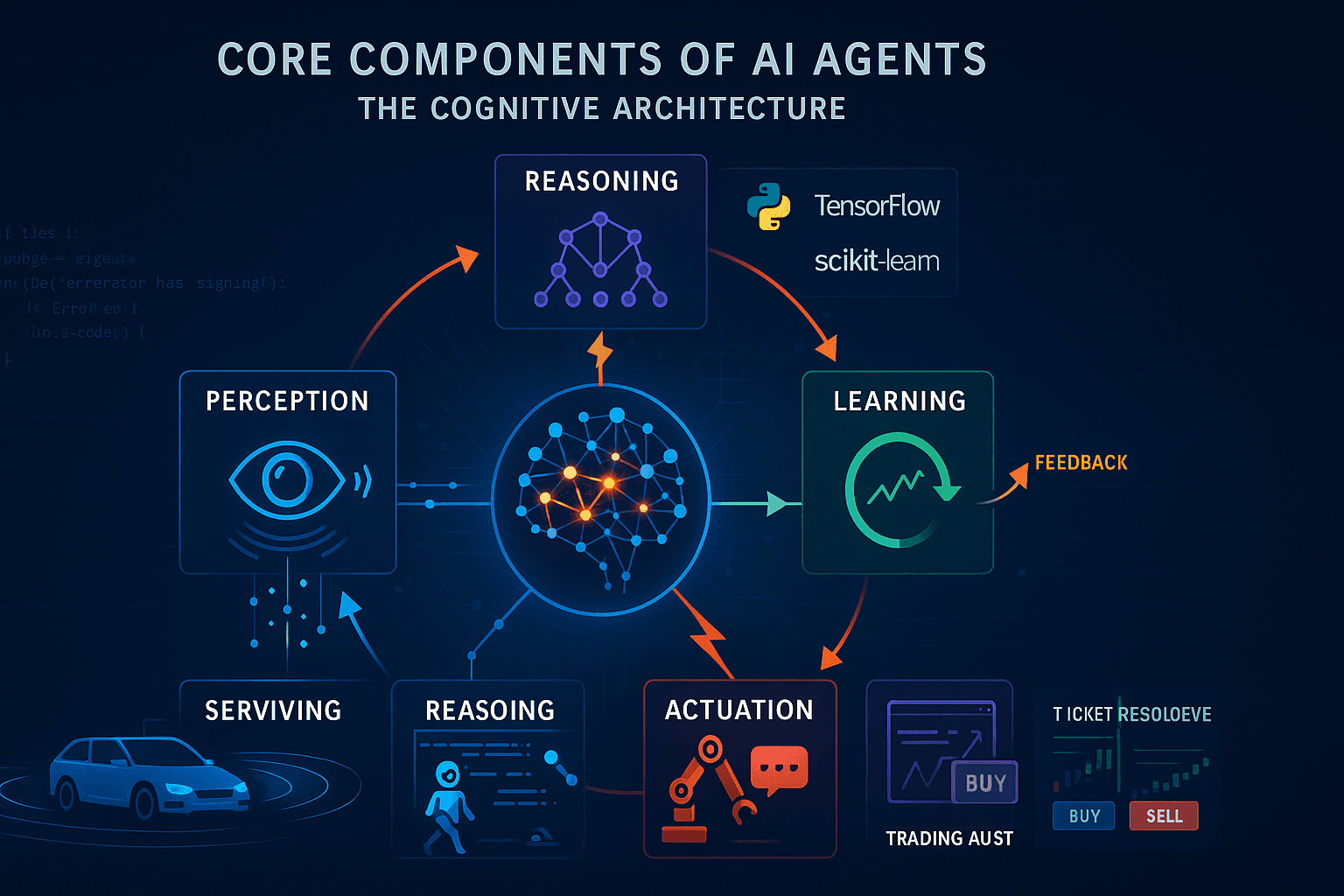
Real-World Applications of Agentic AI
Agentic AI drives innovation across different sectors by transforming data into actionable outcomes and helping to extract insights through Machine Learning and Data Analysis. In healthcare, systems use patient data to find disease markers fast. Predictive analytics cut diagnostic time by 40% in trials.
Financial institutions deploy AI agents that monitor market fluctuations and execute trades via decision trees, showcasing real-world applications in business optimization. Retail giants use this technology to personalize experiences. LLMs track buying habits to suggest products. This shows how advanced AI can tackle complex tasks.
The automotive industry relies on this technology for self-driving cars that process sensor data in real-time. These systems use computer vision and smart path algorithms to move across the cities. They show how neural networks can perform tasks on their own, encouraging learners to learn to code AI and learn AI for beginners with practical, real-world relevance.
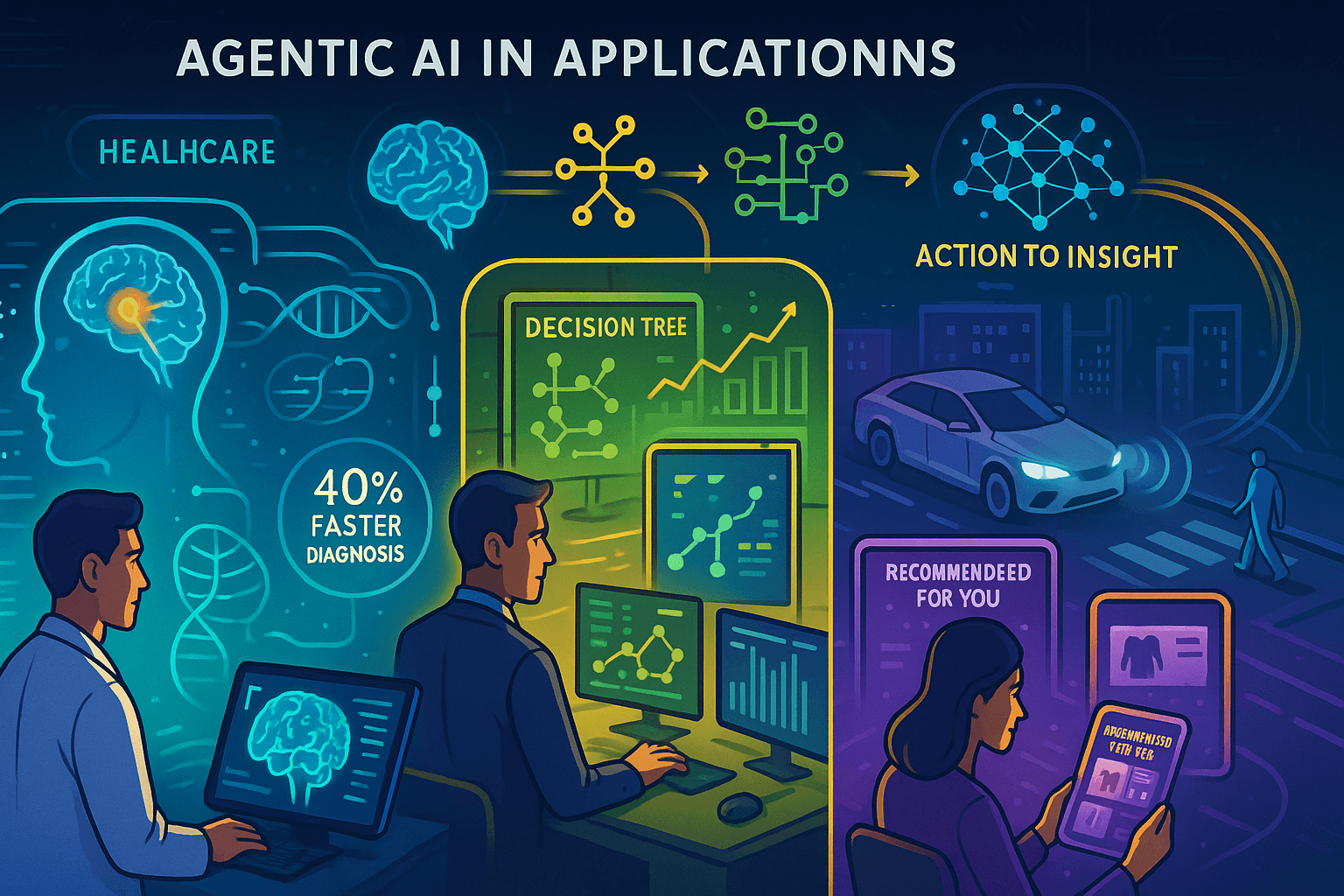
Manufacturing department achieves 30% efficiency gains from warehouse robots using Agentic AI for inventory management. These AI agents predict equipment failures. They use time series analysis on machinery data streams, which reduces the need for human intervention.
Even creative fields employ generative AI agents that compose music through pattern recognition techniques. Agentic AI shows its versatility in many real-world tasks. It can detect fraud and monitor the environment.
This is done by using data science with AI to pull insights from large data sets. Each model gets better through Reinforcement learning. This supports learners aiming to learn AI for beginners and helps them understand how to learn to code AI effectively. This lets systems try different ways to solve problems in changing environments using machine learning data analysis.
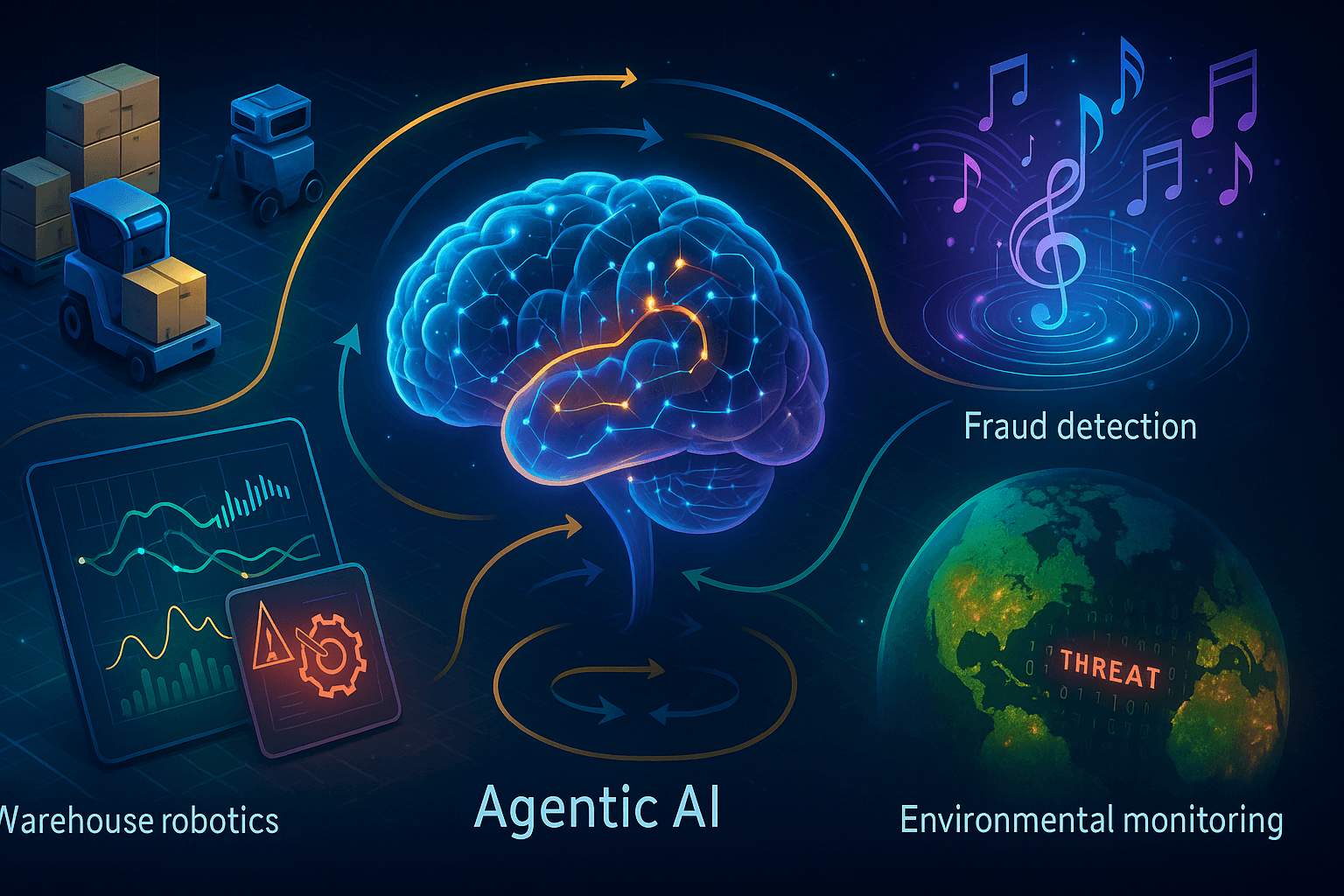
Agentic AI and Machine Learning
Machine learning provides the adaptive backbone for Agentic AI systems. While traditional coding defines rigid parameters, ML algorithms enable agents to learn from data science with AI processes and refine their approaches.
Natural language processing enables customer service bots to understand complex requests. It analyzes lots of human interactions to do this. LLMs also watch buying habits of customers to recommend the products. This shows how advanced AI agents can tackle complex tasks and provides a foundation to learn AI for beginners.
Deep learning techniques help agents to handle unstructured data, such as medical images or social media content and also store data effectively. A financial forecasting AI agent might combine time series analysis with deep learning and principal component analysis to distill market trends from noisy data.
An e-commerce AI agent tracking customer behavior might start with basic machine learning data analysis, then evolve using unsupervised learning to uncover hidden preferences. This synergy explains why 78% of advanced AI applications now integrate Agentic AIprinciples with ML frameworks like TensorFlow or PyTorch, encouraging those eager to learn to code AI.
How to Get Started with Agentic AI
Starting your Agentic AI journey doesn't need an advanced degree. Just follow simple steps and use easy tools. Start with free online courses on platforms like Coursera, focusing on AI basics and Python programming as they teach basic coding skills. The modules focus on data structures, algorithms and simple AI agent design.
Next, experiment in development environments such as Google Colab or OpenAI Gym. Create simple AI agent, such as chatbots, that handle user input. This helps you practice how perception modules work with reasoning engines.
Then move to machine learning projects using public datasets from Kaggle. Create an agent that predicts housing prices using decision trees or try sentiment analysis on product reviews to understand how models learn from labeled data. These projects help you grasp how machine learning data analysis systems use feedback.
Learn neural networks and you can build agents that recognize handwritten content and classify them accordingly. This hands-on approach builds practical knowledge while developing problem solving abilities.
The Future of Agentic AI
Agentic AI will redefine human-technology interaction within this decade. Education systems will deploy AI agents tutors that adapt teaching methods based on student progress, using natural language processing to explain complex concepts, making AI a part of the course.
Businesses will use multi-agent networks. In these systems, supply chain bots will negotiate on their own with logistics systems. Expect breakthroughs in ethical AI governance as these systems handle sensitive decisions in healthcare and law.
Research will speed up in three main areas: First, Agentic creativity, this is where generative AI creates art and literature that look just like human work. Secondly, Collaborative agents help tackle global issues. They solve challenges like climate modeling using distributed problem solving.
Third, enhanced human-AI teamwork, such as coding assistants that reduce development time by 60% through real-time error detection. As sensor data improves, Agentic AI will help manage city infrastructure. It will also optimize energy grids and assist in space exploration. AI will not only assist us but also create solutions.
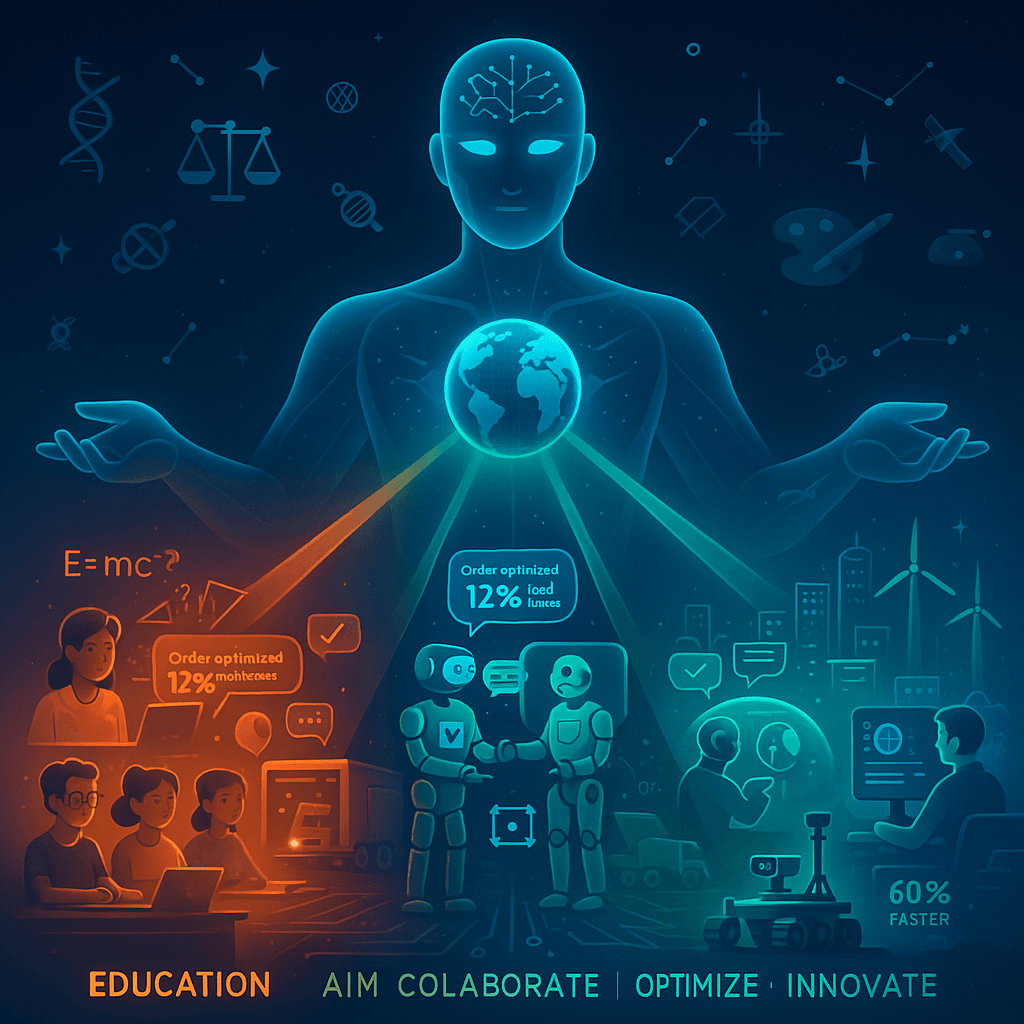
Conclusion
With Agentic AI, the future of software development isn’t only smart but proactive too. It marks a paradigm shift from reactive programming to proactive Artificial Intelligence. Beginners can learn AI for beginners through Python programming. They can take online courses and work on hands-on machine learning projects.
Agentic AI is changing how businesses operate and how customers experience services. It does this by using advanced models to analyze complex patterns in big data. The future is for systems that do more than process data. They predict needs with analytics, make decisions using trees, and act on their own with neural networks. Begin your learning journey today. Embrace the autonomous revolution and build essential AI skills for real-world use.
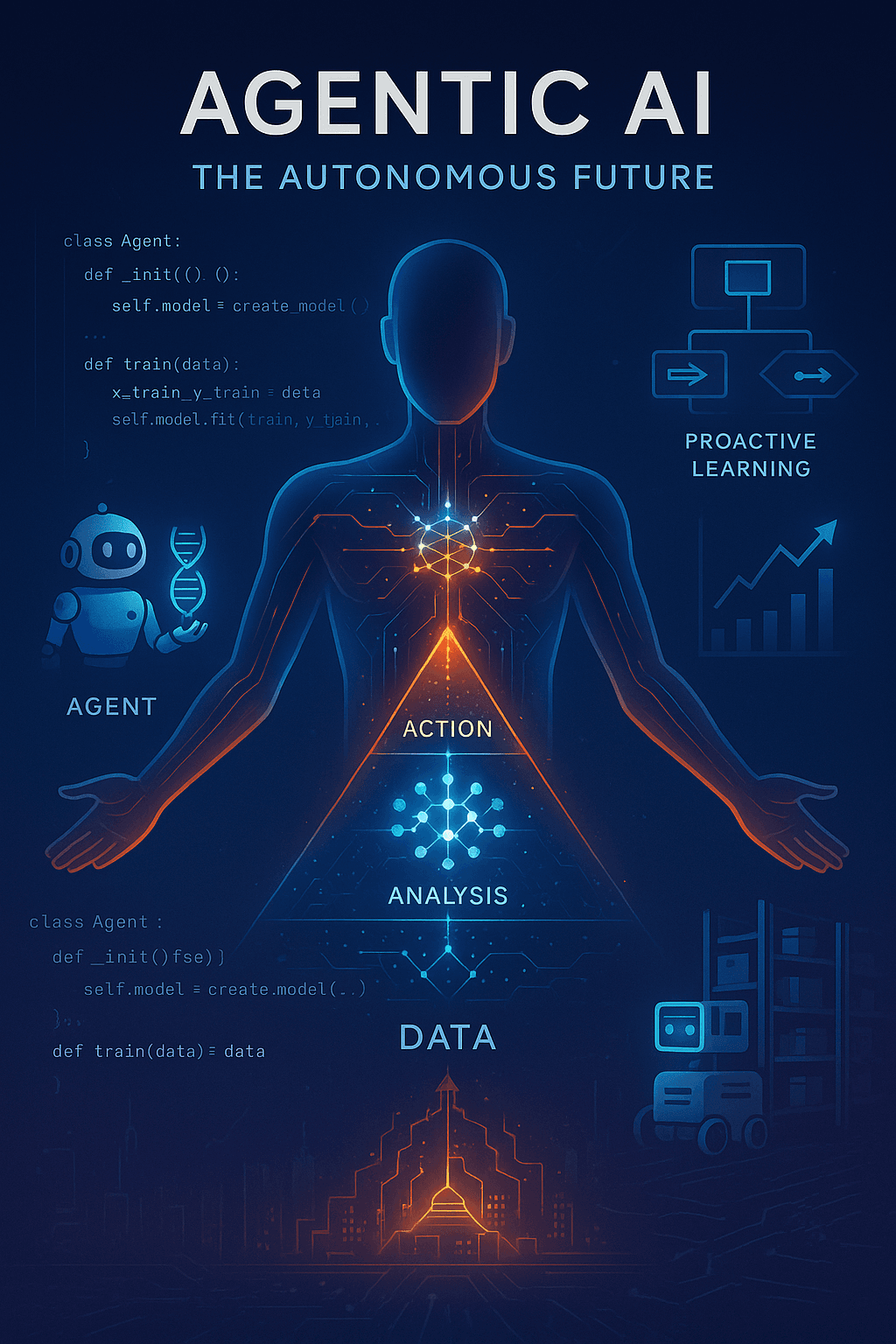
Frequently Asked Question
Is Agentic AI the same as an AI agent?
Agentic AI and AI agent are often used interchangeably to describe an AI system that exhibits autonomy, perception, reasoning, and action. Agentic AI is the same as an AI agent. It works on its own to reach goals without needing human help. It first understands the environment, then uses logic like decision trees or neural networks to make decisions. Finally, it takes action by itself. It’s smart, goal-driven, and keeps learning over time.
Do I need a background in computer science to explore Agentic AI?
You don’t need a CS degree to get started with Agentic AI. Many AI for beginners tutorials use simple tools (like Python or Scratch) and explain core ideas such as goals, perceptio and feedback in plain language. You can learn fundamental machine learning and data analysis concepts through free courses before diving into code.
How does Agentic AI use machine learning data analysis to improve?
Agentic AI applies machine learning to collect and analyze feedback on each action. It tracks success metrics and adjusts its decision-making logic. Then, it refines its neural network or reinforcement learning models over time. This data analysis loop helps the agent decide better by considering various factors. It cuts errors and adapts to new situations.
Can I explore data science with AI through agentic systems?
Agent-based models can help in data science with AI projects. They simulate complex processes, such as predicting customer behavior and supply-chain flows, using different approaches. Agentic AI simplifies automating real-world tasks, showcasing the ability to integrate with various system. It wraps ML models in agents that gather data, learn patterns and act on insights. This approach blends predictive analytics with autonomous workflows.
What are some good beginner tools to learn to code AI and explore Agentic systems?
Begin with visual platforms like Scratch or MIT App Inventor. They help you understand logic and event handling. Then use Python. Try with libraries like scikit-learn for basic machine learning.
For neural networks, use TensorFlow. For hands-on Agentic AI, use OpenAI Gym or no-code tools like AgentGPT. These help you create simple, goal-driven agents.